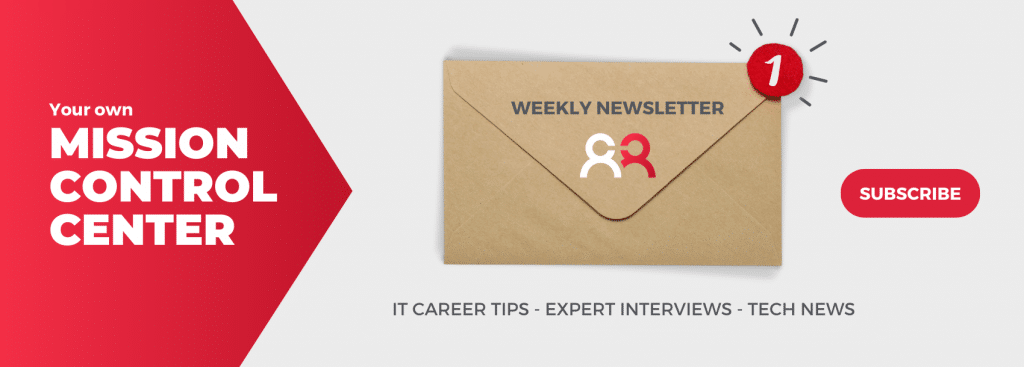When it comes to enterprise technology, the Microsoft Technology Stack reaches almost as far as the eye can see. From operating systems and development tools to cloud computing, the company owns an extremely diversified portfolio of solutions that can be hard to keep track of as an IT professional.
Don’t get lost in the clutter. These are the principal platforms that make up the Microsoft Technology Stack.
.NET
An open-source, cross-platform development framework used to build all sorts of applications. .NET, allows developers to choose among a wide variety of programming languages, code editors and libraries, giving users the flexibility and scalability to build solutions for everything from web and mobile to IoT.
It is these broad capabilities that make .NET one of the world’s most popular developer platforms. As such, it benefits from the support of a vast community and an extensive repository of libraries.
GitHub
GitHub has been part of Microsoft since the company acquired it in 2018. The platform is used by both amateur and expert developers to host code, review it and collaborate by focusing on version control and following a continuous integration, continuous delivery (CI/CD) philosophy.
Its impressive community is what really fuels GitHub. Millions of programmers upload their work and review each other’s code through the platform. As such, GitHub is one of the world’s largest open-access repositories and collaborative projects platforms.
Furthermore, the fact that is used by hobbyists, corporations and top professionals alike has turned GitHub into a sort of LinkedIn for developers and tech enthusiasts. A place to showcase one’s talent and concrete achievements.
Microsoft 365
Microsoft 365 is one of today’s leading cloud-based productivity platforms. It combines the traditional MS Office suite with a set of collaboration tools and features like cloud-based storage and Teams to provide organizations and individuals with the means to get things done wherever they are located.
It is a mix of software like Microsoft Teams, Word, Excel, and PowerPoint, with flexible and scalable cloud storage and security and world-class security. From an IT perspective, it requires companies to deploy, maintain and update an infrastructure that is adapted to business needs while preserving security and a nimble spirit.
Dynamics 365
Customer Relationship Management (CRM) systems are all-encompassing software toolsets with capabilities extending across marketing, sales and customer service. As a leading CRM, Dynamics 365 allows organisations to easily plan and execute operations from a single platform. The speed, efficiency and cohesiveness derived from its use have made CRM a staple of today’s business management – as well as one of the most profitable specialisations in the IT world.
Dynamics 365 is a scalable solution that allows for advanced customization, making it adaptable to the needs of each company. It is the job of technical MS experts to set up, customize and maintain this environment in a way that maximizes efficiency, user satisfaction and customer loyalty.
Test these upcoming Dynamics 365 features
Azure
Microsoft Azure is the company’s public cloud computing platform. A competitor to Amazon Web Services (AWS), Google Cloud, and IBM Cloud, Azure provides companies with a wide range of cloud services, including computing, storage, analytics and networking.
Azure is an open-source-friendly, adaptable and scalable platform that fits the needs of every customer. Furthermore, Azure is industry-specific, providing dedicated tools to sectors like healthcare, e-commerce or retail. It offers 4 different types of cloud computing: infrastructure as a service (IaaS), platform as a service (PaaS), software as a service (SaaS) and serverless.
A whole army of professionals is needed to design, deploy and maintain such cloud ecosystems.
On Learning Azure IoT and Being an Active Member of the Community
Microsoft Power Platform
The Microsoft Power Platform enables businesses to create and deploy custom-made workflow apps and reports that help them easily extract, process, and analyse data. The Power Platform is integrated with the rest of Microsoft’s ecosystem of platforms as well as with other third-party apps.
It is a key tool in today’s data-driven business world, providing actionable insights in real time. It requires a team of technical experts to deploy, maintain and expand, as well as to train end-users and offer them support on a daily basis.
Microsoft SQL Server
SQL Server is a relational database management system (RDBMS) by Microsoft. Also called MSSQL, it serves as the backbone to data registering, accessing and manipulation for its enterprise customers.
It is protected by high-grade encryption and caters to a variety of businesses depending on size and data needs.
Learn more about the QlikView Developer Job
Visual Studio
Microsoft Visual Studio is an Integrated Development Environment (IDE) that can be used to build anything from the ground up. In a way, IDEs are the word processors of the programming world, allowing developers to create applications for a multitude of platforms from a single place. Visual Studio includes debugging, automation and team collaboration features, creating a holistic environment to conceive and deliver high-quality applications.
Learn more about the Microsoft Technology Stack and the various roles within Microsoft Technologies in our comprehensive Microsoft Technologies Careers Guide


